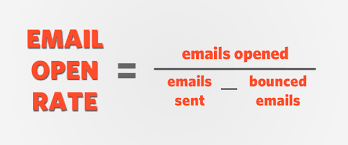ContentsEmail Open Rate as a concept1. Clear and concise2. Personalize your message3. Write the benefit4. A/B Testing5. Be coherentPrecautions:1. Caps Lock2. Exclamation marks3. Different symbols4. Selling5. Language and filtersConclusion Email Open Rate as a concept Email is one of the best ways to reach our potential clients, and for this reason, we should have a […]
Contents
Email Open Rate as a concept
Email is one of the best ways to reach our potential clients, and for this reason, we should have a good understanding of this tool. Email Open Rate must be one of the most important marketing metrics to look for, but it’s not always easy to have good results.
Did you know that… A business owner or someone in a management position can sometimes receive 100 emails a day? Your messages are competing with other adverts, newsletters and “things to do”. Your email subject line can decide whether you win or lose a campaign, so therefore it is really important to devote even a little attention to this because essentially it’s people’s attention that you need to attract. Don’t waste your potential clients and readers´ time, because this could mean in being deleted or classified as spam.
To help you with your email open rate, here are some precautions and suggestions regarding email subject lines.
1. Clear and concise
Emails with around 50 characters generate more openings and clicks than those that are longer. Don’t try to write “The Complete Works of Shakespeare”, be brief.
2. Personalize your message
What could be simpler than writing your clients name in the message? To write something like “Dear client” is considered as generic. Writing “Dear John” is personalized These types of emails are the best way of showing the client that he is not just a number in your database.
3. Write the benefit
You won’t improve your email open rate if there is no benefit to be gained. Whether it’s mentioning a promotion, an offer, an important development about your company or a free download for them, make sure that the client knows what they are about to open.
4. A/B Testing
If you are unsure about what type of email subject could increase the opening rate or clicks in your emails<, it may be a good idea to do an A/B Test. Test your subject lines with the A/B method; create two emails with some slight differences and send one of these emails for 50% of your list, and the other email for the other 50%, then measure the results.
5. Be coherent
Your clients weren’t born yesterday, don´t write deceptive subject lines, because clients will remove you from their list as a result, as well as be sending your email to the spam folder. Promise what you have written in the subject line.
Precautions:
1. Caps Lock
HELLO HOW ARE YOU? SO, HOW ABOUT OPENING THIS EMAIL NOW? Writing with Caps Lock (using all capitals) is almost as if we are shouting, and this isn´t very pleasant for the person reading the text. Your clients don’t shout at you, so treat them in the same way. The caps lock button can help you to highlight the occasional word, but don’t overdo it.
2. Exclamation marks
In the same way that she should never overuse capital letters, as mentioned in the previous point, we should also avoid constantly using exclamation marks, which could be considered “spammy”.
3. Different symbols
Emails could quite easily end up in the user´s spam folder if you use symbols such as “@#$%&”, because they are symbols which could trigger spam mechanisms. Exceptions to this rule can be made when you want to mention contacts (the “at” @ symbol), or the hashtag (#), which are used in Twitter and more recently on Facebook.
4. Selling
The best titles, or rather, the best email subject lines, are those that describe what is in the email, whilst the worst are those which sell what is contained in them. Don’t mimic those who try to sell by forcing products on potential clients. The objective of the email subject line is to make the reader open the message.
5. Language and filters
There are certain words that can be considered as repetitive and abusive by email filters. Repetitively mentioning words such as “free”, “cheap”, “buy now”, “visit our website” can trigger the instinctive spam filters of your potential reader.
Conclusion
Implement the suggestions, and take care not to make the mistakes mentioned previously, by writing emails that will be more relevant to your clients, and more easily opened by them.
